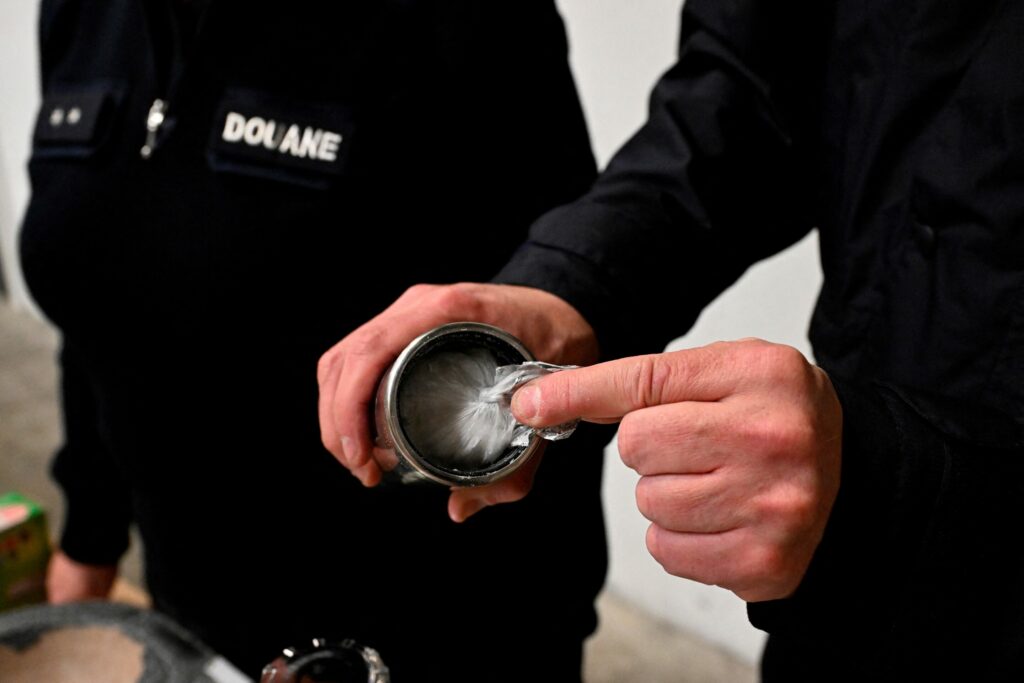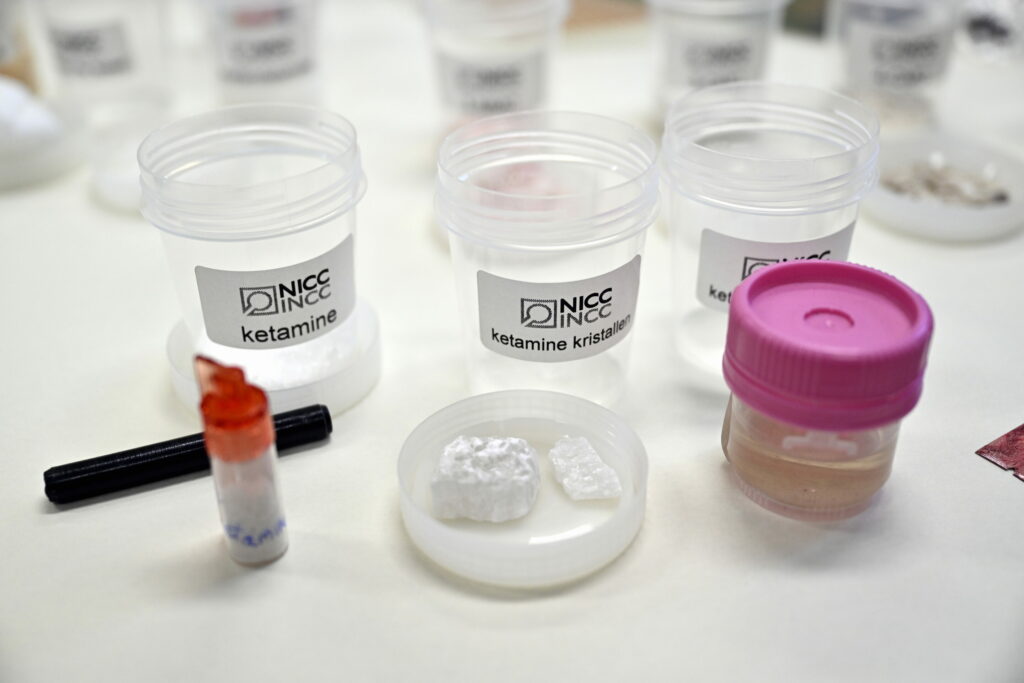Belgium is among the countries with the highest concentrations of drug residue – including MDMA, cocaine, amphetamines and ketamine – found in its wastewater, according to the latest findings of the European multi-city 'Wastewater analysis and drugs' study.
The project analysed wastewater in a record 128 European cities from 26 countries (24 EU Member States, Turkey and Norway) to explore the drug-taking behaviours of their inhabitants. Belgium was among the countries with the highest mass loads for MDMA, cocaine and amphetamine.
Meanwhile, methamphetamine – traditionally concentrated in cities in Czechia and Slovakia – has now also been found in cities in Belgium. In all 26 countries, ketamine levels in municipal wastewater remained relatively low, but Belgium was still among the countries reporting the highest mass loads of the drug, along with the Netherlands, Hungary and Norway. For cannabis, the levels found in Belgium were average.

A Belgian customs officer presents ketamine hidden in medical tubes. Credit: Belga / John Thys / AFP
The study analysed daily wastewater samples in the catchment areas of wastewater treatment plants over a one-week period between March and May 2024. Wastewater samples from some 68.8 million people were analysed for traces of five stimulant drugs (amphetamine, cocaine, methamphetamine, MDMA/ecstasy and ketamine) as well as cannabis.
Despite results varying considerably across the study locations, all six illicit drugs investigated were found in almost every participating city. Less divergence is seen in drug-taking habits between large and small cities for some drugs.
"This year's study paints a clear picture of a drug problem that is both widespread and complex, with all six substances detected in nearly every location," said European Union Drugs Agency Executive Director Alexis Goosdeel. "As the potential of wastewater analysis grows, we look forward to further developing our work in this area to better inform public health and policy responses."
Urban patterns
The analysis found that for cocaine, higher loads were detected in larger cities. For methamphetamine and MDMA, however, no marked differences were seen when comparing results from large and small cities.
This suggests that, in some cases, "urban" patterns of drug use may be spreading to smaller towns. For the remaining three substances analysed, no clear pattern emerged, consistent with findings from previous years.
When looking at which types of drugs are being used on days of the week, more than three-quarters of the cities showed higher residues of drugs often associated with use in recreational settings (cocaine, ketamine and MDMA) at the weekend (Friday to Monday). In contrast, residues of amphetamine, cannabis and methamphetamine were distributed more evenly throughout the week.

